Last week in my first post for Black History Month, I looked at the Ghana Empire. This week for my second post, I will look at the Mali Empire.
The Rise of Mali Empire
At the fall of the Ghana Empire, Mali rose to prominence. The Mali Empire reigned from the 13th to the 17th century and was established by King Sundiata Keita (the Lion King). Sundiata Keita was of Malinke Noble lineage; the Malinke Kingdom had initially been part of the Ghana Empire. Sundiata Keita united several smaller Malinke kingdoms near the Upper Niger River and extended his Kingdom. Sundiata’s rule lasted from 1235 AD to 1255 AD.
Mansa Musa – The Famous King Of Mali
The most famous King or Mansa from Mali was Musa, commonly known as Mansa Musa. He ruled from 1312 AD to 1337 AD. Musa extended the Kingdom to include modern-day Senegal, Southern Mauritania, Mali, northern Burkina Faso, western Niger, the Gambia, Guinea-Bissau, Guinea, the Ivory Coast, and northern Ghana. The estimated size of the Empire was 478,819 square miles. There were over 400 cities, towns, and villages. Mali was a multicultural, multilingual kingdom.
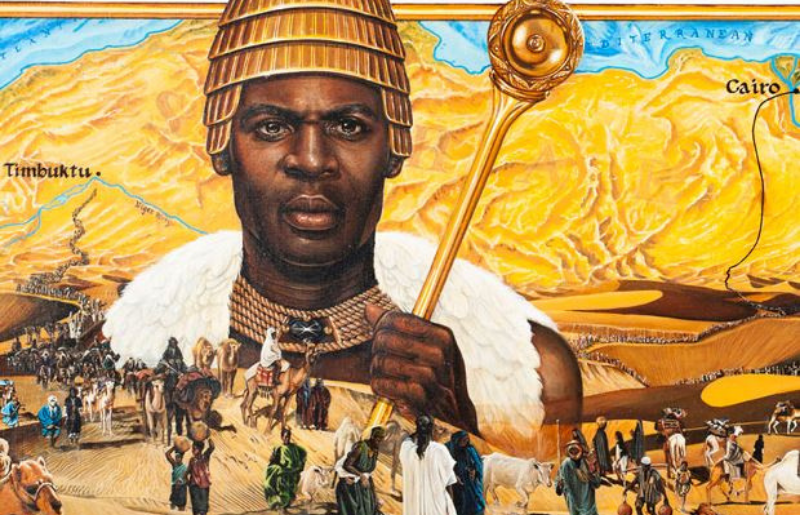
The City of Timbuktu
One of the 400 cities was Timbuktu; it was an important city and was known as a center of knowledge. In fact, Timbuktu had one of the first universities in Sub-Saharan Africa. The university included an extensive library with books from Greece and Rome. The Mali Empire was predominantly Islam; there were several mosques for worship and prayers in Timbuktu.
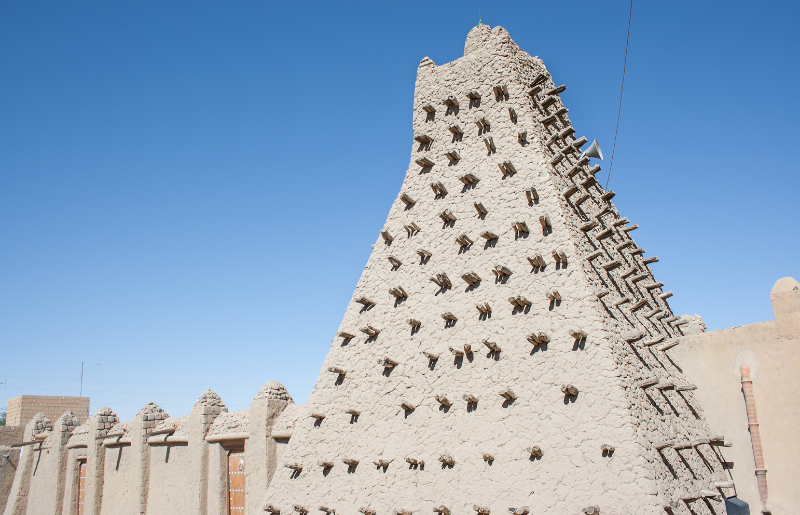
During Mansa Musa’s rule, his Empire had several provinces and towns. Emirs or governors ruled the provinces. The governors were usually famous generals; sheiks ruled some provinces. A mayor or mochrif governed the towns. Musa had an army that maintained peace by quelling rebellions and patrolling trade routes. Mansa Musa was an “exceptionally wise and efficient ruler.”
The Wealth of the Mali Empire
When the Mali Empire took over from the Ghana Empire, they gained control of the Trans-Saharan trade routes. Mali’s position was strategic; it was between the Saharan Desert salt and the gold mines in West Africa. The Empire’s wealth was heavily dependent on trade and taxation. Like the Ghana Empire, the gold nuggets belonged to the King, and everyone else traded the dust. Reports suggest that the Mali Empire had an abundance of gold dust and salt deposits that they used to help expand the Empire’s commercial assets. Like the Ghana Empire, there was a heavy tax levied on all goods passing through the Empire. It is a widespread belief that Malian sailors sailed to America in 1311AD. That dates to 181 years before Columbus.
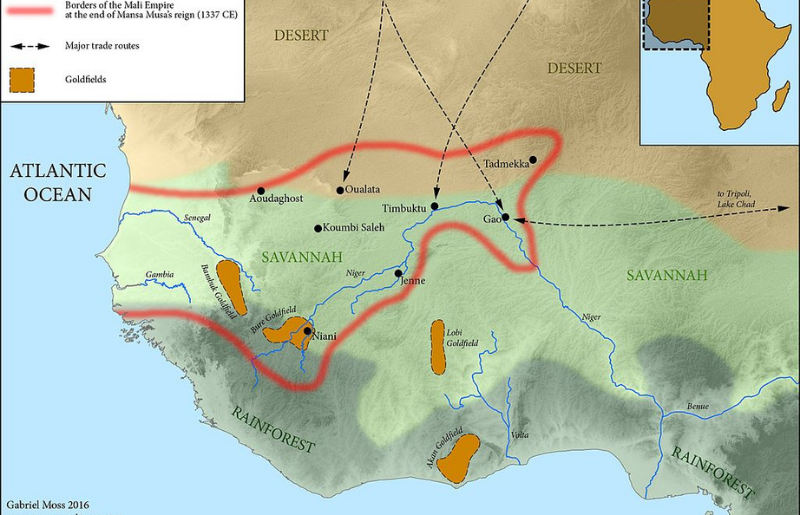
The Kingdom of Ghana was able to expand trade using camels and caravans; however, the Mali Empire was able to develop further because they used the Niger river to transport bulk goods more efficiently than could be done by land. The fertile lands of the Niger provided an abundance of food crops used for the parts of the Kingdom that were in drier areas and oasis towns along the trade routes. In addition to gold and salt, the Mali Empire had another source of trade: food crops. Gold and salt were like currency, and so were cowrie shells, but the shells were only for internal trade.
Musa As A Ruler
Musa was said to rule with impartiality and a great sense of justice. He established diplomatic relationships with other African states, especially Morocco. Musa was the leader that firmly established Islam in Mali and was best known for his pilgrimage to Mecca. He was so lavish with gold on that trip that it flooded the Cairo market, causing a decline in its value. As a result, many European explorers and Muslims from Northern Africa started to search for Timbuktu with the hopes of finding Musa’s riches. He is believed to be the richest man to date in history.
The Fall Of the Mali Empire
After Mansa Musa’s death around 1337, the Mali Empire fell. The Empire no longer had access to the trans-Saharan trade routes, Timbuktu was raided and burned. Songhai, which was previously under the Mali Empire, gained its independence. The decline of the Mali Empire was due to competition from other trade routes, poor leadership that consequently led to civil wars, and the Songhai Empire’s invasion in the 15th century. The Empire would last for another two hundred years before the Moroccan Empire occupied the area in the 17th century.
Conclusion
There are so many similarities between the Ghana and Mali Empires. Firstly, they were both West African Nations that traded in gold and salt. Secondly, they both controlled the Trans-Saharan Trade Routes. Thirdly, both Empires eventually adopted Islam, which helped foster better relations with neighboring Islamic Kingdoms. Finally, they were both able to expand their trade; Ghana used camels while Mali used boats.
In the same way, there are similarities in the two Empires; there are differences. For example, there is no exact date of the formation of the Ghana Empire. In contrast, the Mali Empire started with the union of smaller states under the leader Sundiata. Mali was much larger, wealthier, and had more influence than the Ghana Empire, but that is no surprise since the Mali Empire absorbed the Ghana Empire. In addition, Mali was able to extend its territories and develop relations with many countries of the World.
In conclusion, it is important to note Sundiata Keita created a charter of rights called the Manden Charter. Historians believe the document was created before the Magna Carta. Furthermore, the document, sometimes called a Constitution, consisted of a preface and seven chapters. It addressed diversity, social peace, the sanctity of human life, women’s rights, the right to an education, food security, and even self-expression. Equal rights to citizens, including women and enslaved people, were included in the Charter. The Charter aimed to foster peace and social stability.
Resources
https://en.wikipedia.org/wiki/Songhai_Empire
https://www.britannica.com/place/Mali-historical-empire-Africa
https://www.globalsecurity.org/military/world/africa/mali.htm
https://www.history.com/news/who-was-the-richest-man-in-history-mansa-musa
https://www.worldatlas.com/geography/mali-empire.html
https://www.britannica.com/place/Songhai-empire
https://bigthink.com/politics-current-affairs/did-this-medieval-african-empire-invent-human-rights/

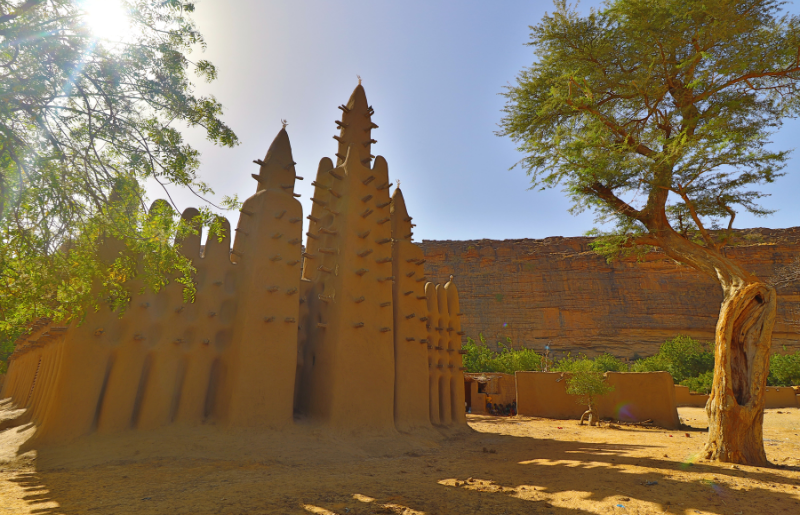
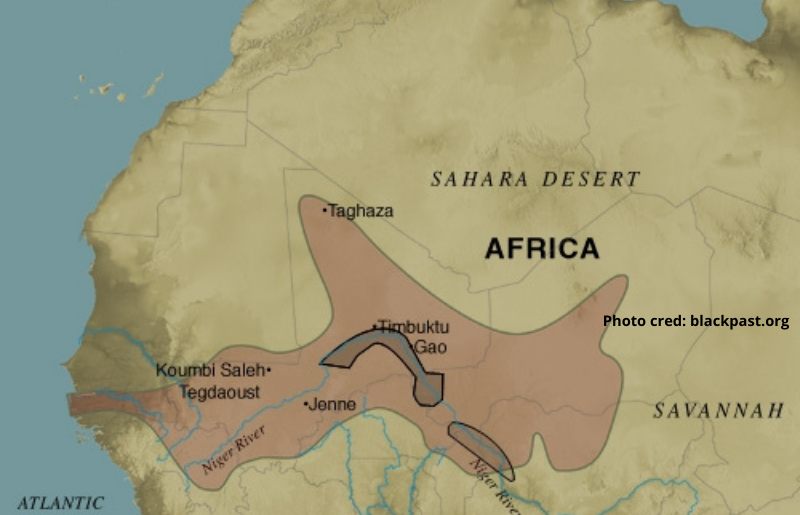
It is amazing how I didn’t even know about the Mali Empire. I have always wondered why other people wanted to conquer other people’s lands the way that they did back then. I wonder what the Mali Empire would have been like and the impacts it would have made on the world if it had remained.
Great question. I wonder about that myself.
So interesting to read and learn about! Thank you so much for sharing this. It’s important for everyone to know their history on such important topics.
Thank you.
This is super interesting. I’m always happy to see rulers who did or do so with justice. Seems like that’s more rare than one might think.
So true.
I love reading historical blog posts where I learn about a history of a place. Such a wonderful empire Mali was at one time
History is my jam lol. In another lifetime I think I was a historian or archaeologist.
This is very interesting. I didn’t know much about this history and after reading this, I learned a lot about the Mali Empire. Thank you for sharing this with us.
Thank you.
I am really enjoying this series. Thank you again for highlighting yet another fascinating segment of Black history…of which again I had no knowledge of!
Thank you, I learned a lot as well.
I am following your stories, they’re fantastic…I was never exposed to the Mali empire, this is fascinating to me…
Thank you.
This is such an interesting read – and thank you for including your sources in case we want to dive in for more. I am learning so much through this series.
Thank you.
This is a very educational read. I didn’t know at lot about the empires until now.
Thank you.
This was very informative. I am not familiar at all with either. I have heard of Timbuktu but that is the extent of my knowledge. Very interesting.
Thank you for reading. I learned a lot while doing the research.